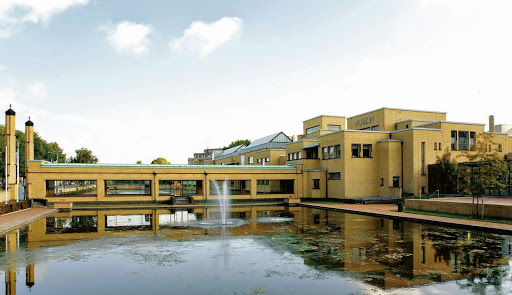Chances are you will meet royalty on a visit to Holland this spring or summer, albeit in the form of classic blue-and-white Delftware. Last month the Gemeentemuseum in the Hague announced it had acquired two rare Defltware figurines. The Dutch figurine flower holders represent King William III and his wife and cousin, Queen Mary.
The flower holders, which measure 42.5 cm in height, were separated for 40 years while in the hands of separate private collections. With the landmark acquisition, the Gemeentemuseum guarantees preservation of Holland’s royal heritage.

According to the Gemeentemuseum’s director, Benno Tempel, the figurines are not only one of Holland’s most groundbreaking acquisitions of Dutch Delftware, but the royal couple are nationally symbolic.
“They (William and Mary flower-holder figurines) are also a powerful symbol of the economic prosperity of Golden Age Holland and the nation’s rich royal history,” said Tempel.
Aside from the age of the two exquisite vases, produced circa 1690 at one of Delft’s leading factories, the figurines are the only known full-length court figurines and marital partners in the world.
The figurines are donned in elegant 17th century fashion. Mary is wearing a court gown called at Mantua while William is wearing an Asian-inspired banyan called a Japonse rock. The attire, jewelry and hairstyles provide evidence that the couple is William III, Stadholder of the United Netherlands, and King of England, Ireland and Scotland.
Mary not only loved blue Delftware but loved the flowers that were considered very exotic in her day and age. Flowers such as carnations, tulips, anemones, and ranunculus were not only exotic in the 17th century but extremely expensive. Delftware flower baskets and tulip vases were commonly used to show them off.
William and Mary, immortalized by creation of the blue Delft figurines, lived in both Holland and England. Delftware is a world famous Dutch pottery or ceramics. Mary is considered the foremost contemporary ambassador of this wholly unique Dutch artwork.
As recently as 2014, the figurine of Mary was in a private collection in Belgian while William was in a private collection in France. As fate would have it, the couple was reunited at an antiques fair in the United States. The reunion had to do with selling the priceless ceramic objects rather than sentimental value.
So in an effort to keep the couple from disappearing into a private collection in the United States, the Gemeentemuseum bought the pair of figurines with the support of several interested parties, including the Rembrandt Society, the Mondriaan Fund, VSB Fund, Hendrik Muller Fund, and the Friends of the Gemeentemuseum.
The museum has one of the largest collections of modern art in the world under one roof. Here visitors will find works by Monet, Van Gogh, Picasso, Dumas, Kandinsky and many others. Visitors will also see the largest collection of works by Piet Mondriaan, including Victory Boogie Woogie.

Thanks to a long-running research project into Delft artworks, the museum published a book in 2007 focused on Delftware flower holders, vases with spouts and background into the history of this important Dutch industry.
Today, tourists also flock to the Gemeentemuseum to see its vast collection of Delft pottery, and the new acquisition is an added bonus to any museum visit. And since blue-and-white Delftware and tulips are symbols of Holland, the museum has teamed with Keukenhof Bulb Garden to ensure visitors see both of Holland’s icons.
Keukenhof Bulb Garden has about 7 million flowering bulbs. For eight weeks in the spring, Europe’s most colorful garden attracts millions of tourists. Within the 80-acre park, 32 acres are filled with tulips, daffodils, hyacinths, carnations and the like. That’s why the collaboration between the museum and the bulb garden is a team effort aimed at preserving Holland’s legacy.

Wikimedia Commons: Bùi Thụy Đào Nguyên
As for the figurines of William III and Mary, they are a major addition to the museum’s national art collection and Holland’s cultural heritage. Additionally, bringing the royal married couple back to Holland represents the final chapter of a historic love story.
“It’s like discovering a new picture by Vermeer or Rembrandt,” added Tempel, the Gemeentemuseum’s director since 2009.
For more information visit: http://www.gemeentemuseum.nl/en or www.holland.com
Rosie Carbo is the Lifestyles Editor for Wandering Educators, and is a former newspaper reporter whose work has appeared in newspapers and magazines nationwide. Some of those publications include People magazine, The Dallas Morning News, The Houston Chronicle and San Antonio Express-News. Some of her features were redistributed by The Associated Press early in her career as an award-winning Texas journalist.
Photos courtesy and copyright NBTC, except where noted
